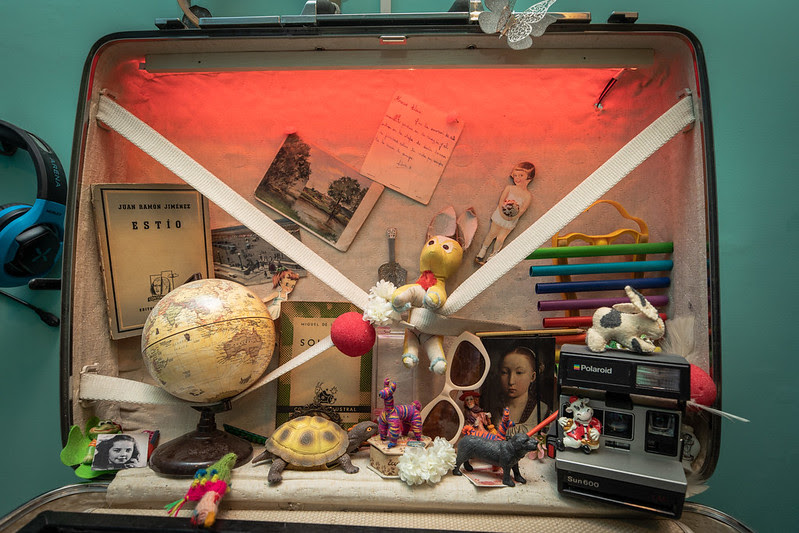By Natalia Kidd |
Morón (Argentina) (EFE).- The house of María Elena Walsh (1930-2011), recovered and recently opened to the public as a museum, allows us to peek into the vital and creative origins of this writer, poet, screenwriter, singer-songwriter and playwright, considered the greatest exponent of literature and children’s songs in Argentina.
Of British and Andalusian descent, Walsh was born on February 1, 1930 in this house in Villa Sarmiento, Morón municipality, on the western outskirts of Buenos Aires.
“My house was very big, with a garden, patios, fruit trees, a chicken coop, a dog, a cat, canaries, a turtle, bicycles, books, and a piano. What more could you ask for? ”, The author recalls in an autobiography that she, as a story, she included in her work“ Chaucha y palito ”(1977).
In this property, almost in a state of abandonment when it was purchased in 2021 by the municipality with funds from the Argentine Ministry of Culture, Walsh lived until his adolescence.
“It was the place where she was impregnated with much of what was later her literary magic and as a composer. María Elena Walsh began composing as a teenager, with which we assume that in this house she already began her creative experience. And there is a lot of record of this house in its texts”, Fernando Torrillate, secretary of Communication of Morón and in charge of starting the museum, told EFE.
Play
In this place he learned the love of art, in general, and of words, in particular.
Here his creative genius was born, among the chords that came from the hands of his father, a railway employee who, as a self-taught musician, played the piano and the cello.
Here he grew up, among the sweet aromas born from the hands of his mother, whom he considered a true “artist” in the kitchen.
He also played here with his sister Susana, in a patio crowned by a leafy jacaranda tree with light blue flowers like the ones in his famous song. And with cicadas, also protagonists of one of his most famous songs, a true hymn of resistance.
“It is a great house that has that spirit that María Elena continued to show us later, which was to allow us to play,” says the museologist Maribel García, summoned by the Cultural Institute of the province of Buenos Aires to give life to this museum.

Everything in this place is charming, like being at times in a doll’s house, an English country kitchen or a room with “things for adults” -books, instruments, records- where playing is allowed.
Some objects recall the author’s fascination with cinema, theater and music, and her love of reading. At the age of four, a neighbor of hers taught her to read and write. And her father taught her to play rhymes in English and Spanish, “as if the words were so many toys,” wrote the creator of albums such as “Songs to watch” (1963) and “Let’s play in the world” (1968).
There are toys everywhere in this house, especially in the one that was her room, now exquisite, with the dresses of the time.
“During the day it was a girl who had a romper-clothing. Later, she played with basket bugs and with little balls. In the afternoon, she became a ‘window-sidewalk’: her mother prepared her with an organdy dress to be on the sidewalk and so that she would be a perfect girl for others, as every mother wanted. And finally, at night she turned into a little angel and she dreamed that the virgins surrounded her and she sang with a diamond-shaped microphone. And she would go to sleep like that, ”says García.
María Elena Walsh and a wonderful story
In the adjoining bathroom, a tap opens and the song “Manuelita, la tortuga” resounds. In the tub, a ship heads to Paris, the destination of the turtle and where Walsh herself lived between 1952 and 1956, singing a duet with folklorist Leda Valladares even at the famous Crazy Horse cabaret.
Torrillate says that next to the house there is still a psychiatric clinic that has existed since Walsh’s childhood, who once remembered that at night he was terrified of the neighborhood of the “insane asylum” and that “the crazy people” threw “little gifts” at them in the patio, such as “silver paper dolls.”
María Elena and her family left this house when her father retired. They moved close. Walsh would publish her first collection of poems at the age of 17, “Unforgivable Autumn”, praised by literary greats such as Pablo Neruda and Juan Ramón Jiménez, who invited her to settle in the United States for a while.
The rest is history: twenty records and fifty published books, mostly for children. As Walsh once wrote, after all, all life “is a wonderful tale.” And his began to be written in this house.






